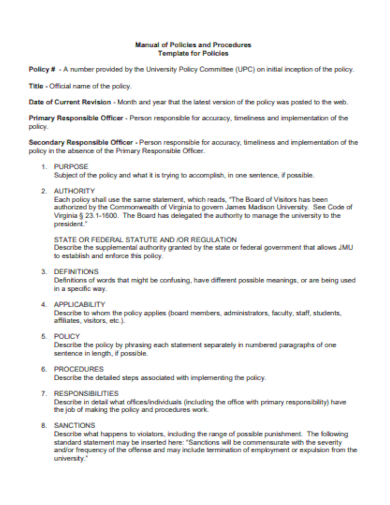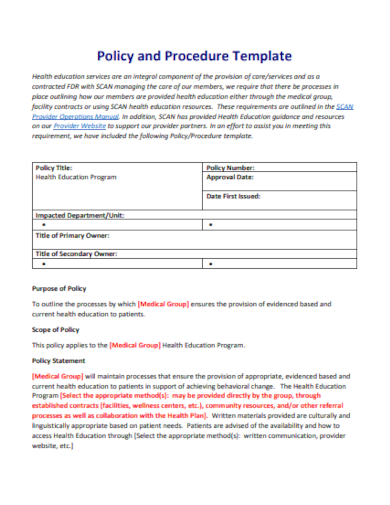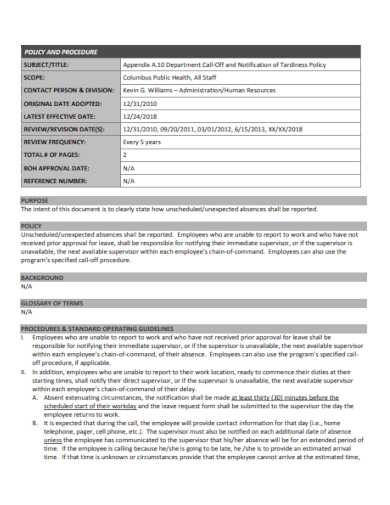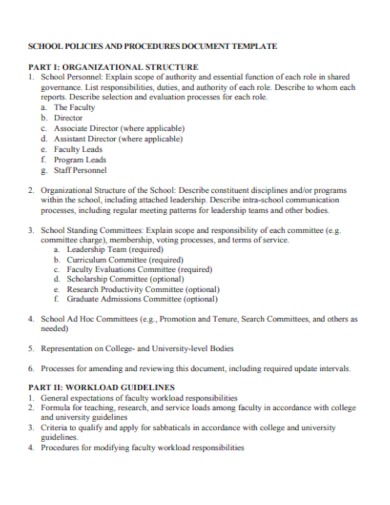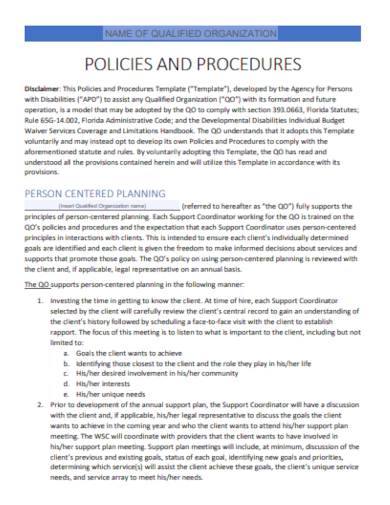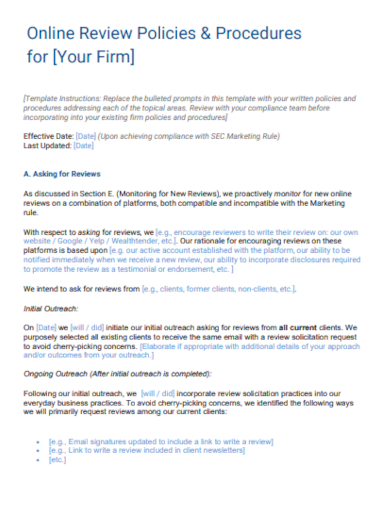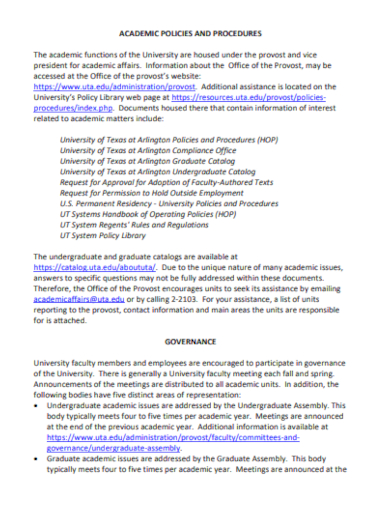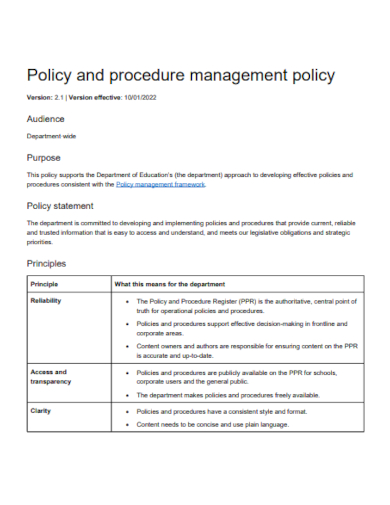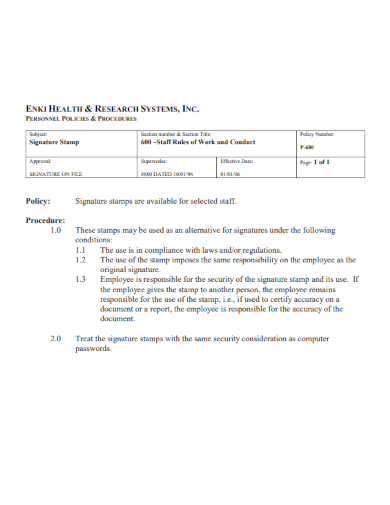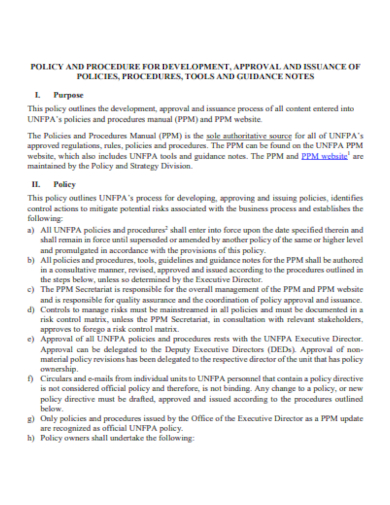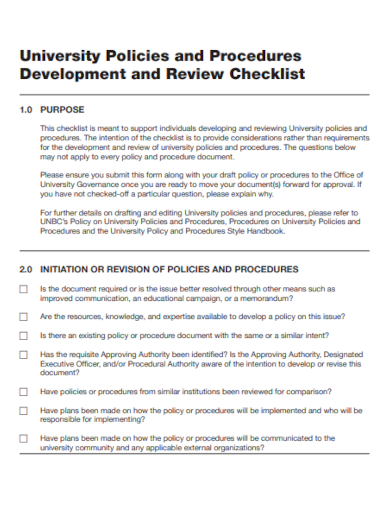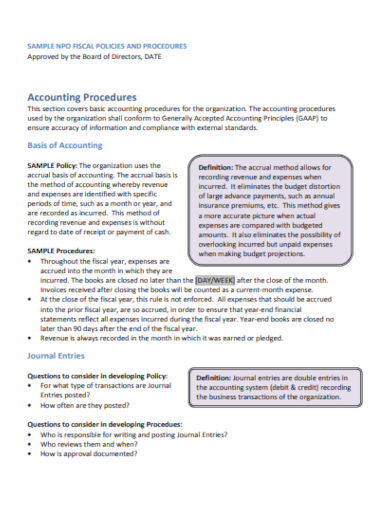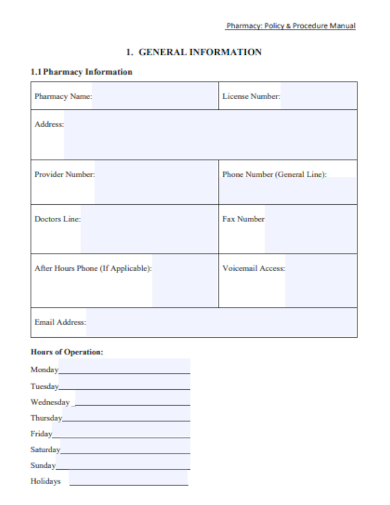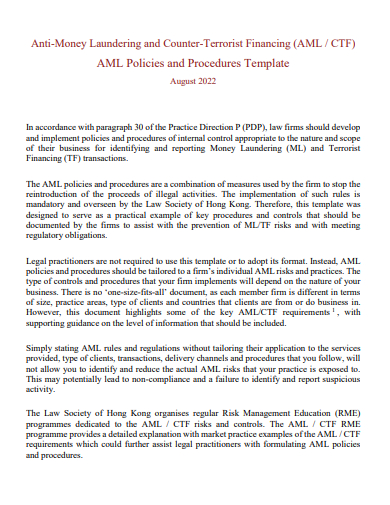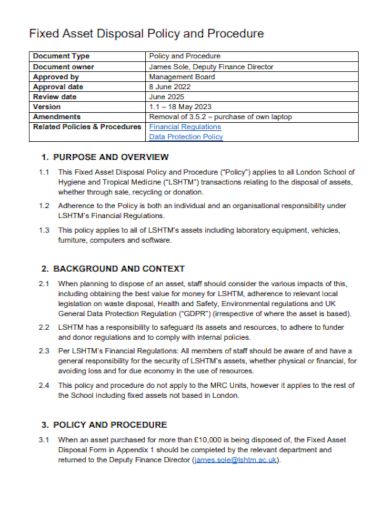In today’s complex and dynamic business samples environment, organizations require robust system documentation and framework agreement to operate effectively. Policies and procedures play a crucial role in governing the behavior, action plan, and decision-making within an organization. They provide guidelines, rules, and protocols to ensure consistency, compliance, and efficiency. Policies and procedures help establish consistency and standardization in business operation plan. They ensure that all employees understand the expectations and requirements for their roles, leading to uniformity in decision-making. This consistency reduces errors and improves overall productivity.
20+ Policies and Procedures Samples
1. Company Policies And Procedures Template

2. Security Policies And Procedures Template
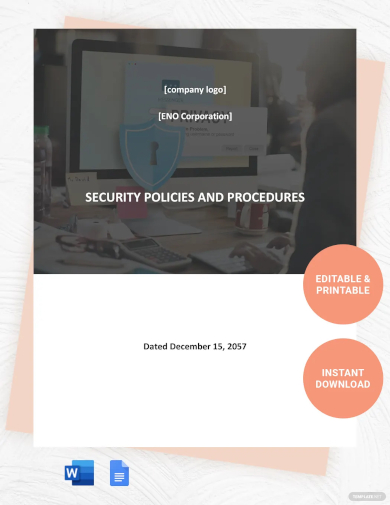
3. Workplace Policies And Procedures Template

4. Sales Policies and Procedures Template
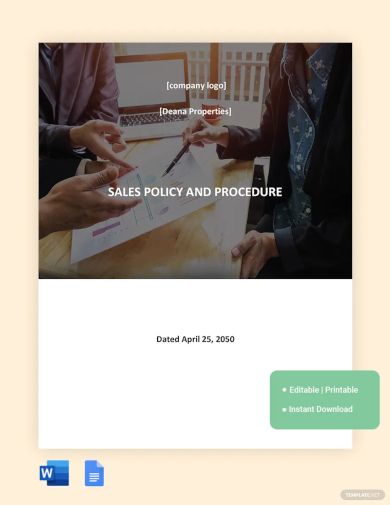
5. Procurement Policies And Procedures Template
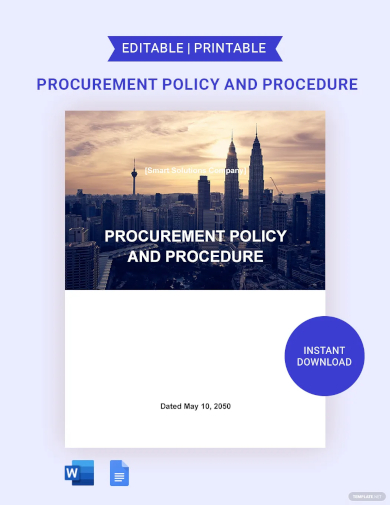
6. Manual of Policies and Procedures
7. Sample Policy and Procedure
8. Internal Policies and Procedures
9. School Policies and Procedures
10. Policies and Procedures Format
11. Organization Policies and Procedures
12. Review Policies and Procedures
13. Academic Policies and Procedures
14. Management Policies and Procedures
15. Personnel Policies and Procedures
16. Policies and Procedures for Development
17. Policies and Procedures Review Checklist
18. Accounting Policies and Procedures
19. Pharmacy Policies and Procedures
20. Finance Policies and Procedures
21. Employee Policies and Procedures
What are Policies and Procedures?
Policies and procedures are two interconnected components of an organization’s framework that provide guidelines, rules, and protocols to govern various aspects of its operations. While policies outline the overarching objectives, principles, and guidelines of an organization, procedures provide detailed step-by-step instructions on how task lists and weekly activity schedules should be performed to achieve those objectives. Both policies and procedures work together to ensure consistency, compliance, and efficiency within the organization.
How To Make Policies and Procedures?
Policies set the strategic planning direction and define the desired outcomes, while procedures provide the specific methods and processes to execute tasks in a consistent and effective manner. Developing policies and procedures requires a systematic approach to ensure they are comprehensive, effective, and aligned with the organization’s professional goals statement and values. Here are the key steps involved in creating policies and procedures:
Step 1- Identify the Need
Determine the areas or processes within the organization that require policies and procedures. This can be based on regulatory requirements, industry standards, best practices, identified risk assessment, or organizational needs. Conduct thorough research to gather information and insights related to the identified areas. This may involve reviewing applicable laws, regulations, industry guidelines, and existing policies and procedures from similar organizations.
Step 2- Define Objectives and Scope
Clearly articulate the objectives of the policies and procedures. Determine the scope of coverage, specifying the areas, departments, or processes they will apply to.
Step 3- Involve Stakeholders
Involve relevant stakeholders, including employees, managers, subject matter experts, and legal or compliance professionals, in the policy development process. Seek their input, expertise, and feedback to ensure comprehensive and practical policies and procedures.
Step 4- Draft the Policies
Write clear and concise policy statements that align with the organization’s objectives and values. Consider including sections that define the purpose, scope, responsibilities, and guidelines for compliance and enforcement.
What happens if an employee does not comply with policies and procedures?
Non-compliance with policies and procedures can have various consequences depending on the severity and frequency of the violation. Consequences may include verbal warnings, written warnings, performance improvement plans, disciplinary actions, or, in extreme cases, termination of employment.
Can policies and procedures change over time?
Yes, policies and procedures should be adaptable to changes in the organizational, legal, and regulatory landscape. They may need to be updated periodically to reflect evolving best practices, industry standards, or internal requirements.
What should I do if I have a question or need clarification about a policy or procedure?
If you have a question or need clarification about a specific policy or procedure, you should reach out to the appropriate authority within your organization.
Policies and procedures are vital tools for organizations to ensure compliance, consistency, and efficiency. By setting clear guidelines and protocols, they foster a productive and accountable work environment. Regular review, effective communication, and a commitment to continuous improvement are necessary to maximize the benefits of policies and procedures. Embracing these frameworks enables organizations to navigate challenges, mitigate risks, and achieve their strategic objectives in an ever-evolving business landscape.
Related Posts
FREE 10+ Dropping Classes Policy Samples & Templates in MS ...
FREE 10+ Charity Safeguarding Policy Samples & Templates in MS ...
FREE 50+ Planning Policy Samples in MS Word - Sample Templates
FREE 10+ Freelancer Policy Samples in Word Google Docs | PDF
FREE 8+ Security Policy Samples in MS Word PDF
FREE 4+ Charity Volunteer Management Policy Samples ...
FREE 10+ Bullying Policy Samples in MS Word PDF
FREE 11+ Charity Complaints Procedure Samples & Templates in ...
FREE 10+ Charity Privacy Policy Samples & Templates in MS Word ...
FREE 10+ Compliance Policy Statement Samples [ Trade ...
FREE 10+ Charity Data Retention Policy Samples & Templates in ...
FREE 10+ Attendance Management Policy Samples in PDF MS Word
FREE 10+ Charity Complaints Procedure Policy Samples ...
FREE 8+ Charity Remuneration Policy Samples & Templates in PDF
FREE 11+ Sample HR Manual Templates in PDF, Word

